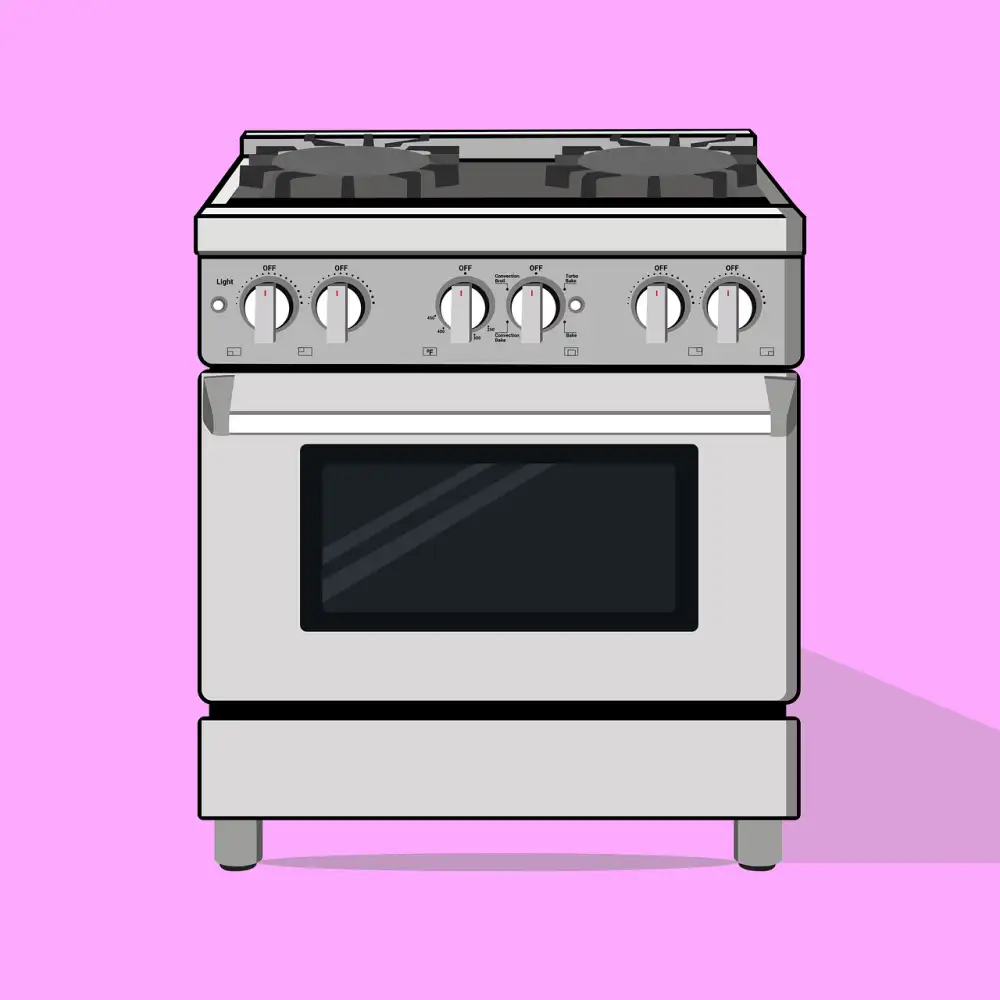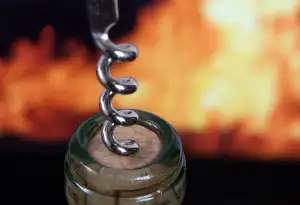Mastering the Art of Cooking with a Convection Oven: A Step-by-Step Guide for Home Chefs

Convection ovens have revolutionized the way we cook, providing home chefs with a powerful tool to create delicious and perfectly cooked meals. Unlike traditional ovens, which rely on radiant heat, convection ovens use a fan to circulate hot air evenly throughout the cooking chamber. This results in faster and more even cooking, making it ideal for baking, roasting, and broiling. In this step-by-step guide, we will explore the basics of using a convection oven and provide you with tips and techniques to master the art of cooking with this modern appliance. Get ready to take your culinary skills to new heights!
Understanding the Basics of a Convection Oven
A convection oven is a modern kitchen appliance that uses a fan to circulate hot air evenly around the food, resulting in faster and more even cooking. Unlike traditional ovens, which rely on radiant heat, convection ovens use both radiant heat and forced air to cook food.
The fan in a convection oven helps to distribute the heat evenly throughout the oven cavity, ensuring that your food cooks uniformly. This means that you can expect your dishes to be cooked faster than in a traditional oven.
Convection ovens also have the added benefit of reducing cooking time because they operate at a higher temperature than regular ovens. The hot air circulation creates a more efficient cooking environment, allowing you to cook multiple dishes at once without worrying about uneven cooking or flavor transfer.
It's important to note that not all recipes are suitable for convection cooking. Some delicate baked goods, such as soufflés or custards, may not fare well in a convection oven due to the strong airflow. However, most recipes can be easily adapted by adjusting the temperature and cooking time.
By understanding how a convection oven works and its advantages over traditional ovens, you'll be able to unlock its full potential and elevate your culinary skills to new heights.
Preheating Your Convection Oven
Preheating your convection oven is an essential step to ensure even cooking and optimal results. Unlike a traditional oven, a convection oven uses a fan to circulate hot air, which means it can reach the desired temperature faster. To preheat your convection oven, simply set the temperature according to your recipe's instructions and allow it to heat up for about 5-10 minutes. This will ensure that the oven is at the correct temperature before you start cooking. Remember, preheating is crucial for achieving consistent and delicious results in your convection oven cooking endeavors.
Adjusting Cooking Time and Temperature
One of the key advantages of cooking with a convection oven is its ability to cook food faster and more evenly. However, this also means that you need to make adjustments to your cooking time and temperature compared to traditional ovens.
When using a convection oven, it is recommended to reduce the cooking time by about 25% compared to what the recipe suggests for a conventional oven. This is because the hot air circulation in a convection oven speeds up the cooking process.
In terms of temperature, you can usually lower it by about 25 degrees Fahrenheit (or 15 degrees Celsius) when using a convection oven. This reduction compensates for the faster cooking time and helps prevent overcooking or burning.
It's important to note that these are general guidelines, and you may need to experiment with different settings depending on your specific oven model and the type of food you're cooking. It's always a good idea to keep an eye on your dishes as they cook and make adjustments as needed.
By adjusting the cooking time and temperature properly, you can ensure that your food cooks evenly and comes out perfectly every time. So don't be afraid to experiment and find the right settings for your favorite recipes in your convection oven.
Using the Convection Setting for Baking
One of the greatest advantages of a convection oven is its ability to bake goods to perfection. When using the convection setting for baking, there are a few key points to keep in mind.
Firstly, it is important to adjust the temperature. Convection ovens distribute heat more evenly, so you can typically set the temperature 25 degrees lower than what a traditional recipe calls for. This ensures that your baked goods will not burn on the outside while remaining undercooked on the inside.
Secondly, be mindful of cooking time. With convection baking, food tends to cook faster due to the circulating hot air. Keep an eye on your baked goods and check them a few minutes before the recommended cooking time in your recipe. This will prevent overcooking and ensure a moist and tender result.
Additionally, use shallow pans or baking sheets with low sides when baking in a convection oven. This allows for better airflow and even browning of your baked goods.
Lastly, avoid overcrowding the oven. Give your food enough space for proper circulation of hot air. If necessary, bake in batches rather than cramming everything into one pan.
By following these tips and experimenting with different recipes, you can unlock the full potential of your convection oven for baking delicious treats that are evenly cooked and have a delightful texture.
Roasting and Broiling in a Convection Oven
Roasting and broiling are two popular cooking methods that can be easily mastered with a convection oven. When roasting, the hot air circulation in a convection oven ensures even cooking and browning of meats and vegetables. To achieve the best results, place the food on a roasting rack or directly on a baking sheet to allow the air to circulate freely. Set the temperature according to your recipe, but reduce the cooking time by about 25% since convection ovens cook faster than traditional ovens.
Broiling in a convection oven is also a breeze. The intense heat from the top heating element quickly sears and caramelizes the food, giving it a delicious crispy exterior. To broil in a convection oven, simply set the temperature to broil and adjust the rack position according to your desired level of browning. Keep a close eye on your food as it can cook rapidly under the high heat of broiling.
Whether you're roasting a succulent chicken or broiling juicy steaks, using a convection oven will elevate your dishes to new heights. Just remember to adjust cooking times and temperatures accordingly for perfect results every time.
Tips for Properly Using a Convection Oven
1. Use the right cookware: Opt for shallow, metal pans with low sides to allow hot air to circulate evenly. Avoid using glass or ceramic dishes as they may hinder the convection process.
2. Adjust cooking times: Since convection ovens cook faster than traditional ovens, reduce the cooking time by 25%. Keep a close eye on your food to prevent overcooking.
3. Lower the temperature: Decrease the temperature by about 25 degrees Fahrenheit when using a convection oven. This will ensure that your food cooks evenly and doesn't dry out.
4. Don't overcrowd: Leave enough space between your dishes to allow proper airflow. Overcrowding can lead to uneven cooking and longer cooking times.
5. Rotate your pans: To achieve uniform browning, rotate your pans halfway through the cooking process. This will help ensure that all sides of your dish are cooked evenly.
6. Monitor food closely: The increased airflow in a convection oven can cause food to cook faster and potentially burn if left unattended. Keep a watchful eye on your dishes to avoid any mishaps.
7. Use lower racks for baking: When baking with a convection oven, place your pans on lower racks rather than in the middle or upper positions. This will prevent excessive browning or burning on top.
By following these tips, you'll be able to make the most of your convection oven and create delicious meals with ease and precision.
Cleaning and Maintenance of Your Convection Oven
Cleaning and maintaining your convection oven is essential for its longevity and optimal performance. Here are some tips to keep your oven in top shape:
1. Regular cleaning: After each use, wipe down the interior with a damp cloth or sponge. Remove any spills or food particles to prevent build-up.
2. Deep cleaning: Every few months, give your oven a thorough cleaning. Remove the racks and soak them in warm soapy water. Use an oven cleaner or a mixture of baking soda and water to clean the interior walls and door. Rinse thoroughly and dry before reassembling.
3. Cleaning the fan: The fan in a convection oven can accumulate grease and dirt over time. Turn off the oven, unplug it, and carefully remove the fan cover. Clean it using a soft brush or vacuum cleaner attachment.
4. Cleaning the vents: Check the vents on your convection oven regularly to ensure they are not blocked by debris or grease buildup. Use a brush or vacuum cleaner to remove any obstructions.
5. Maintenance checks: Periodically inspect the door gasket for any signs of wear or damage. Replace if necessary to maintain proper heat insulation.
By following these cleaning and maintenance practices, you can ensure that your convection oven remains in excellent condition, allowing you to continue creating delicious meals with ease and precision.
In conclusion, mastering the art of cooking with a convection oven can elevate your culinary skills to new heights. By understanding the basics of how a convection oven works and making adjustments to cooking time and temperature, you can achieve perfectly cooked meals every time. Whether you're baking, roasting, or broiling, the convection setting will enhance the flavors and textures of your dishes. Remember to follow the tips for proper usage and regularly clean and maintain your oven for optimal performance. With practice and experimentation, you'll soon become a pro at using a convection oven and impress your family and friends with delicious meals that showcase the fusion of tradition and modernity in food.
Published: 28. 12. 2023
Category: Home



